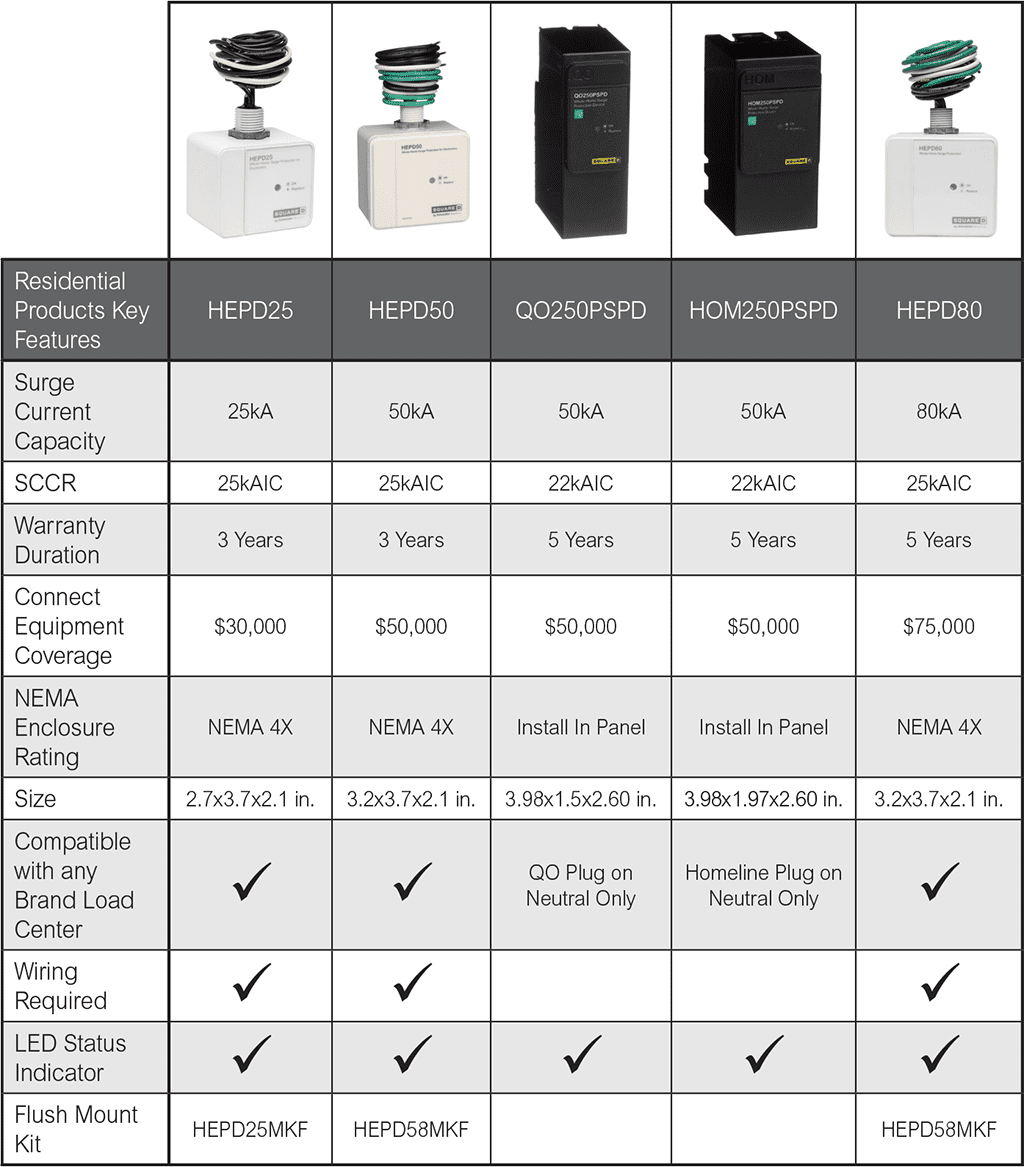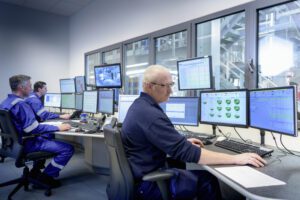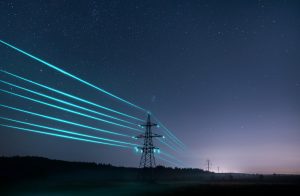There are many choices of residential Surge Protective Devices (SPDs) on the market today and selecting the best electrical Surge Protector can be confusing. Two popular groups of SPDs include the internal mount (plug-on neutral) and external mount (universal) surge protective devices. Let’s discuss the advantages and disadvantages of these two categories so you can make an informed decision on which is best for your application.
Many states have already adopted the newest release of the National Electric Code (NEC 2020). This code mandates the installation of SPDs in any new residential dwellings or with any major upgrade that affects your electrical service. These whole-home surge protectors are put in place to protect any equipment connected to your electric panel, and significantly reduce the probability of a fire in your home due to electrical surges.

Contender #1: Universal SPDs
The Square D HEPD series SPDs are universal and can be mounted externally on any brand of load center. It is offered in several protection ratings, including 25kA, 50kA, and 80kA. The universal component of this plays a key role for Electricians who have limited space on their trucks. It acts as a one-size-fits-all product, reducing the amount of space needed for storage. Another key advantage of the HEPD universal SPDs is that because they are installed on the outside of the electrical panel, the service LED is visible without the need to open the panel door. This gives homeowners the ability to notice when an SPD has reached their end of life.
The disadvantages of the external mount SPDs are that they take more time for installation and may be harder to position based on what else may be around the electrical panel. Lead lengths should be as short and straight as possible, so if lead wires are too long, additional impedance will be added to the system which will adversely affect the performance of the device.
Contender #2: Plug-on Neutral SPDs
The plug-on neutral mounted SPDs are available in 50kA. These can be installed in your electrical panel like a breaker. These devices are the same size as a double pole breaker and can be installed in seconds. Since time is money to electricians, this is a great feature. Also, because there are no wires, this direct connected plug-on neutral SPD offers an advantage in performance since there is no added impedance from additional lead wire length.
The primary disadvantage with plug-on neutral is that they are manufacturer, and panel-specific. Square D offers the Homeline and QO residential panels, so one must use the corresponding Homeline or QO SPDs.
So, which Surge Protector is the best?
The best electrical surge protector is really based on your individual circumstances. If you have the extra time to install or have limited space on inventory, the HEPD universal external mount style may be best for you. If time efficiency is important, and you can carry a few additional parts in stock, then the internal mount SPD may be best. Or, it may be good to offer a combination of the two. For example, since Square D electrical panels are the primary panel used for residential service today, perhaps you stock Square D plug-on neutral SPDs and a few universal external mount units for all the other load center brands you come across.

Another thing to consider is the warranty of the external vs. internal SPDs. Though they are similar, the higher kA ratings will generally give you a longer warranty with a higher connected product warranty. The table above shares details on the warranties for the mentioned products.
With the new adoption of the NEC2020 code, and the expectation to have a lot more interaction with SPDs, it is a good time to reconsider your SPD processes.



